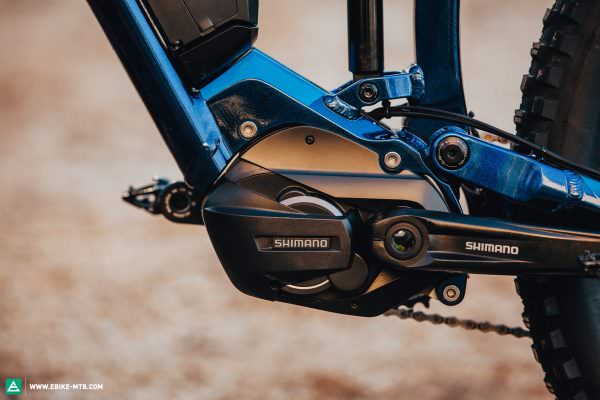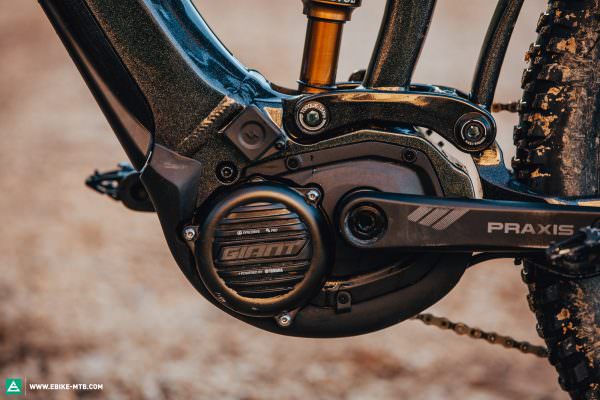There’s no other topic as hotly discussed in eMTBing as the motor. That said, there’s also little point considering the motor in isolation. These days, every detail of the complete system plays a role in its performance and your experience while riding. We tested eight of the hottest ebike motors of 2021.
If you’re looking for a quick and simple answer as to which is the best motor, we have to disappoint you now: there’s no longer just one best motor. With the latest developments in ebike motors and batteries there are lots of systems suitable for different ebike concepts and rider demands. It’s for this reason you can no longer ask which is the best motor, but rather have to think about which is the most suitable system for you.
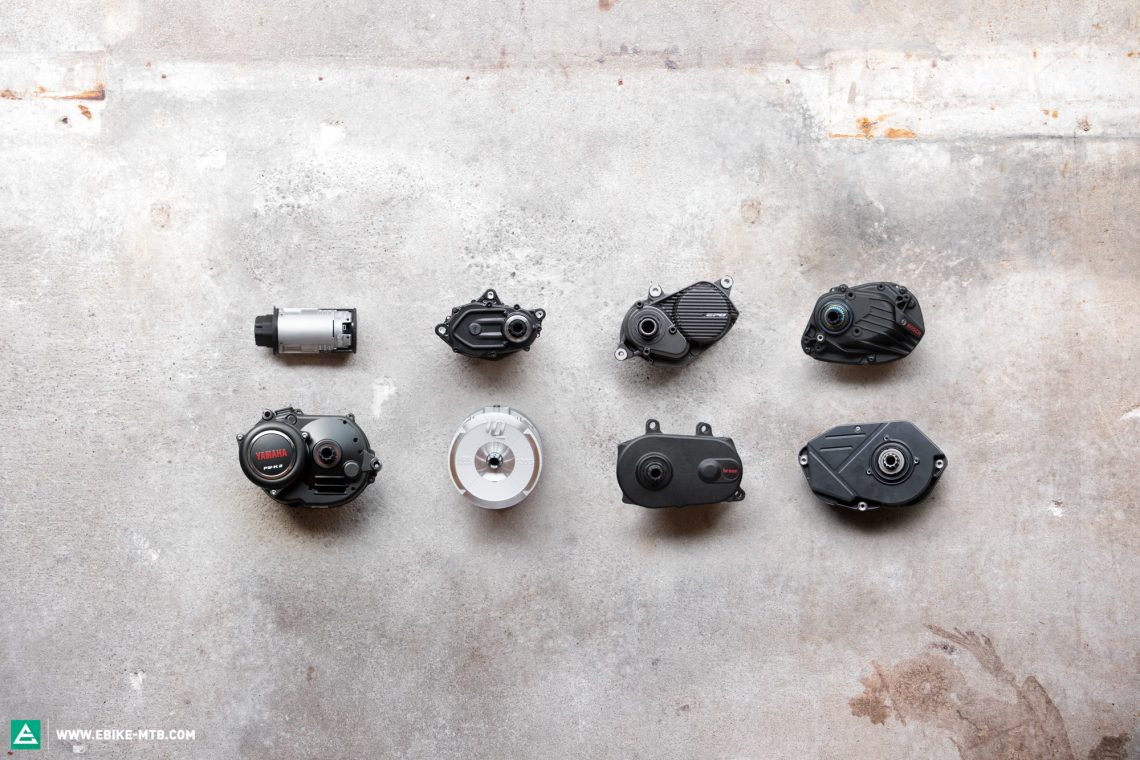
You’ll find everything from low-power minimalists to heavyweight powerhouses. However, besides the motor itself, the complete system is a sum of its integration, ergonomics, a sensible battery solution, the ability to customise support modes and of course the size and weight of the motor. The complete concept and its implementation is what matters most. What’s the point of having the most powerful motor if it only unleashes its full power at too high a pedalling cadence, where you can never really make use of it? What’s the use of natural feeling assistance if using the motor isn’t intuitive because of poor integration and ergonomics? With new motors like the Specialized SL 1.1 or the Shimano EP8 and an ever-growing number of in-house developments, custom solutions and motor models, the market has branched out in so many ways that it’s become impossible to make one-to-one comparisons. So, this time there will be no Best in Test. Instead, we’ll give you an overview of the most important players in the market and figure out the pros and cons of each system and what they’re best at.
A good motor forms part of a seamlessly integrated system, perfectly suited to the bikes intended use.

The motors
In this motor group test, we want to introduce you to the most relevant and innovative motors available on the market. To do so, we tested eight of the hottest motors, putting them through their paces in every imaginable scenario. Older or less common motors like the Shimano STEPS E7000 or the old Bosch Performance Line CX have already been tested by us thoroughly in the past, so we deliberately chose not to include them here. You can find our previous reviews and test reports of these motors on our website www.ebike-mtb.com. As a result, we were able to focus on the newest and best motors currently available from Bosch, Yamaha, Shimano, TQ, SACHS, FAZUA and Specialized. The motors from brands such as Panasonic, BAFANG and Polini are seldom seen on an eMTB. They remain a niche segment with limited relevance in today’s market, which is why they don’t feature here either.
| Manufacturer | Model | Torque [Nm] | Motor weight (kg) |
|---|---|---|---|
| Bosch | Performance Line CX (Click for review) | 85 | 2.79 |
| Brose | Drive S Mag (Click for review) | 90 | 2.98 |
| FAZUA | Ride 50 Evation (Click for review) | 55 | 1.92 |
| SACHS | RS (Click for review) | 110 | 3.66 |
| Shimano | EP8 (Click for review) | 85 | 2.57 |
| Specialized | SL 1.1 (Click for review) | 35 | 1.95 |
| TQ | HPR 120 S (Click for review) | 120 | 3.90 |
| Yamaha | PW-X2 (Click for review) | 80 | 3.06 |
*Attention! Don’t become too fixated by the quoted weights – the motor weight on its own tells you relatively little about the total weight of the system or complete bike. Various other factors, including the mounting and integration of components, additional hardware and the battery have a big influence on the total weight.
Other motors we’ve tested lately: Bosch Performance Line CX 2019 (Click for review) | Brose Drive S Alu (Click for review) | Panasonic GX 0 (Click for review) | https://ebike-mtb.com/en/shimano-steps-e8000-2020-review/”>Shimano STEPS E8000 (Click for review) | Shimano STEPS E7000 (Click for review) | Yamaha PW-X (Click for review)
Which motor is most powerful?
Glancing at the table above, you’ll immediately see some major differences in the power and torque output of the different motors. The Specialized SL 1.1 is one of the weakest, generating a mere 35 Nm torque, whereas the most powerful motor, the TQ HPR 120 S, is capable of generating three and a half times that. This is by no means an indication of how good or how bad either of those motors is. Instead these differences are the result of completely different concepts: the compact FAZUA Ride 50 Evation and Specialized SL 1.1 motors belong to a category of light eMTBs which offer minimal assistance in a lightweight package – these are the motors that will make analog mountain bikes redundant. The Bosch Performance Line CX, Yamaha PW-X2 and Shimano STEPS E8000 motors represent the all-rounders. The Brose Drive S Mag also belongs in this category of eMTBs, though it is noticeably more powerful than the Shimano or Bosch, allowing you to get up the climbs just that little bit quicker. Both the TQ and SACHS motors are even faster uphill, with over a 100 Nm torque on offer. However, built around these systems tend to be heavier too, having to be matched with components that are more robust and requiring a bigger battery. These bikes are designed less for aggressive trail riding than for having as much fun as possible with maximum power.
We think that, if you’re not going to use all the power available to you, you shouldn’t carry around the unnecessary additional weight requisite for that kind of performance.
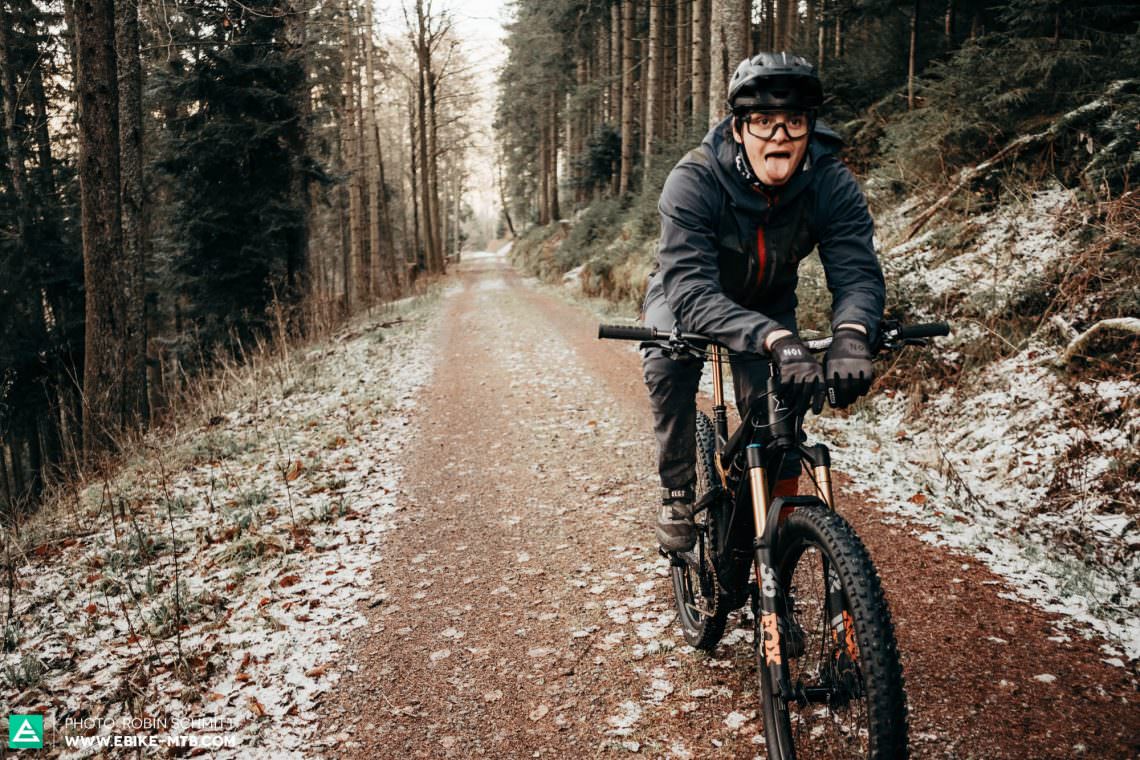
You can learn a lot about a motor on forest service roads but not everything. Our head tester, Felix, had to take the bikes to the extremes to find out what they’re truly capable of.
How much power do you really need?
It’s critical to note that the best motor can only ever be as good as the bike into which it’s built. As well as that, the motor has to be considered in relation to the battery capacity. There’s no use having the most powerful motor if you’ve got to ride your bike in Eco mode just to be able to reach your destination.
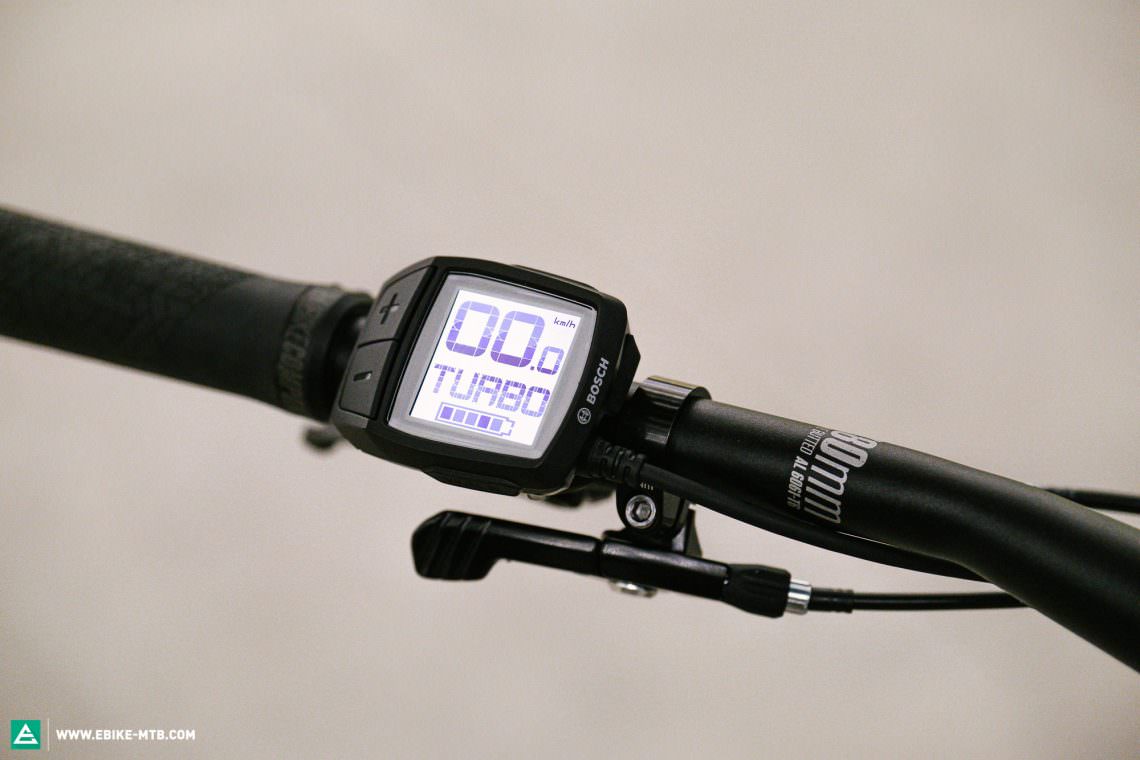
To better understand the importance of this question, we carefully analysed the feedback from our reader survey, including data from over 13,500 participants. We found that only 5% of our readers predominantly use their ebike’s most powerful support mode. 57% spend most of their time riding in the more frugal Eco or Tour modes. We think that if you’re not going to use the power available to you, you shouldn’t be carrying around unnecessary weight. That means that for a majority of these 57% , a weaker yet lighter motor with a smaller battery is likely the better choice than a powerhouse like the SACHS.
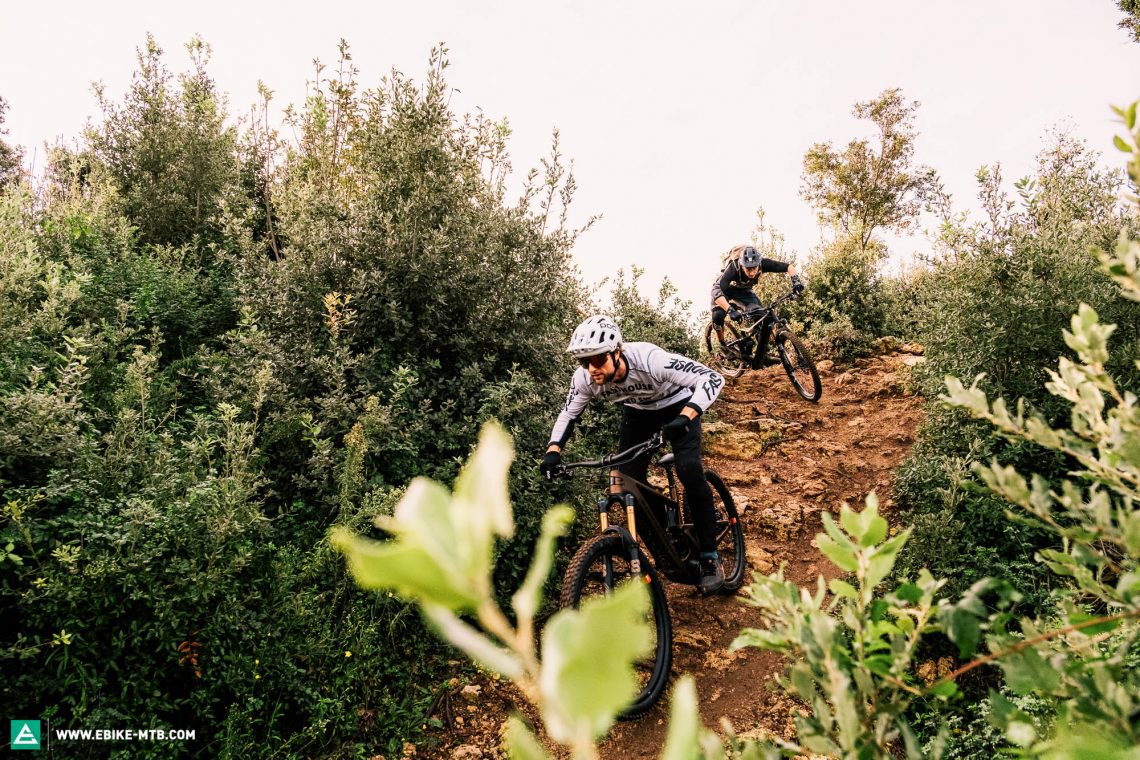
According to our reader survey, a bike’s handling on the trail is the most important criterion when shopping for a new eMTB. Again, smaller and lighter systems have the upper hand in this regard. However, if you want to shuttle up the climbs to get in as many descents as possible in the short amount of time you have available after work, the lighter, less powerful systems (Specialized SL 1.1 and FAZUA Ride 50 Evation) will definitely have you working harder than you would on one of the all-rounders. Here, the Shimano EP8 shines with its adjustable assistance levels. If it’s paired with a smaller battery it is able to combine the motor power of an all-rounder with the handling of a Light eMTB.
If they are thoughtfully integrated and matched with an appropriate battery solution, the classic all-round motors can also deliver great handling and lots of fun on the trail. However, the best all-rounders from the likes of Bosch, Brose and Shimano aren’t limited to aggressive trail riding or quick after-work rides. They perform just as well on long rides as do on your daily commute. The bikes in this category also allow you to pull a trailer or tackle multi-day adventures with racks and panniers.
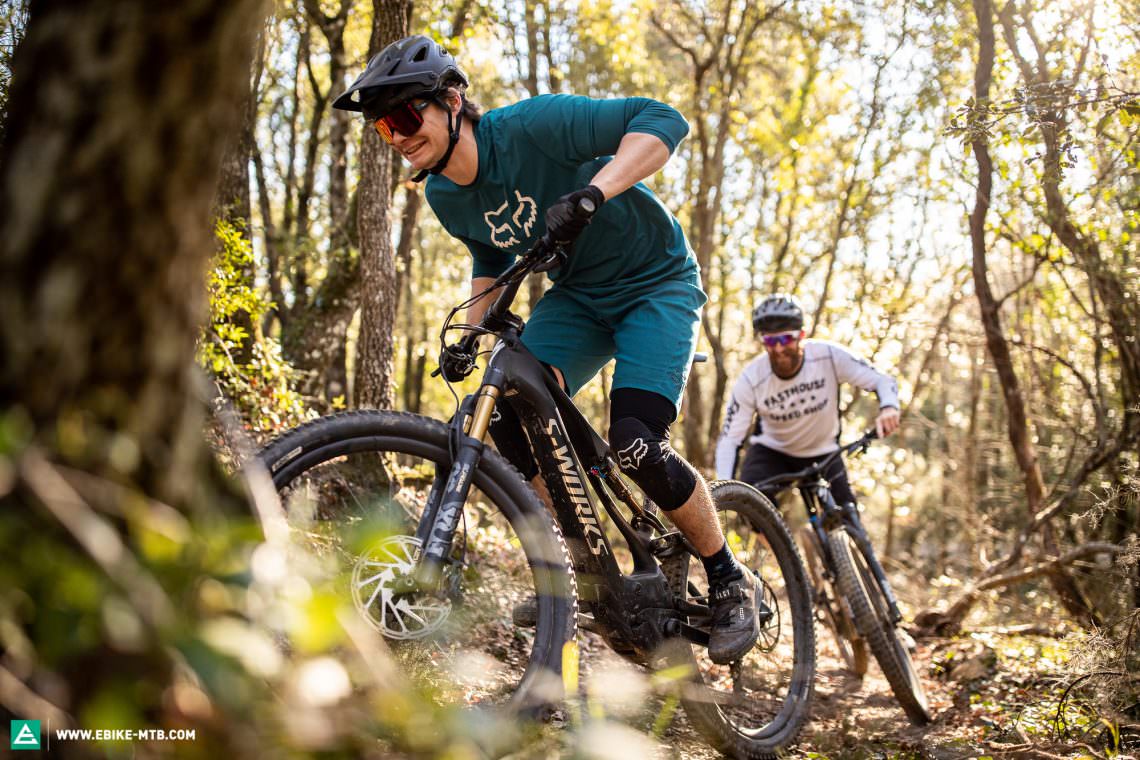
In Turbo mode, you can fly over the trails on your after work ride. However, the software has to deliver the motor’s power gently if you want to stay in control in wet and slippery conditions or on loose ground.
The SACHS RS and TQ HPR 120 S motor, as found on Haibike’s FLYON range, are in a league of their own. If you want to fly up the climbs and ride as fast as possible with minimal effort, or you simply like having the most powerful motor available, these are the models to check out. Note: powerful motors demand a lot of electricity, so they require a correspondingly large and heavy battery. Just as you would if you put your foot down in a Porsche GT3, you’ll simply have to stop and refill/charge often.
Ultimately, it’s a question of personal preference. How much or how little power do you really want (or need)?
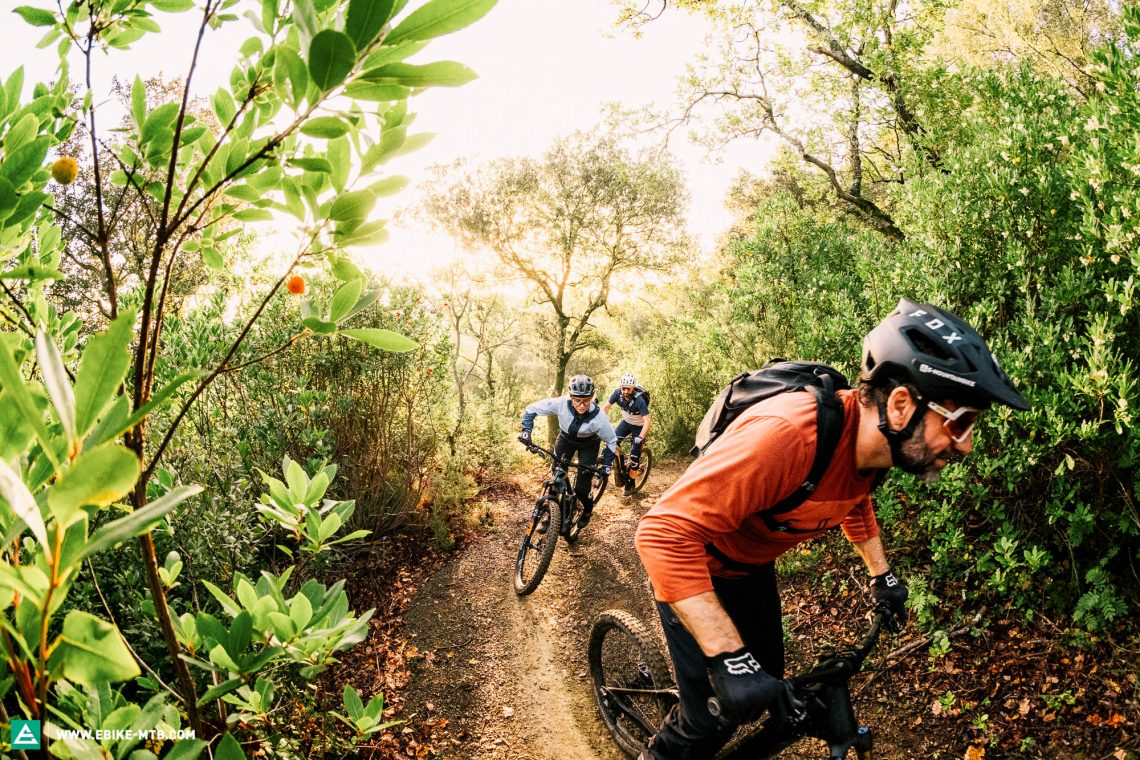
Tuning ebike motors
Tuning eMTBs continues to be a hotly discussed topic and a lot of eMTBers are enticed by the thought. Whether on your commute or quick after-work ride, a lot of you would like to go faster than the legal limit allows, which is 25 km/h in Europe and most other countries. Of course, you can ride an eMTB faster than 25 km/h, as long as you’re fit enough. However, you’ll no longer be supported by the motor and will have to rely solely on the power of your legs. As a result, tuning can seem like an obvious solution for less fit or ambitious riders. Some motors can easily be tuned via an app, or depending on the make and model, you can even buy special hardware that manipulates the signal of the speed sensor. Many riders think these measures make their ebike more powerful. However, that’s not the case – it simply allows you to ride faster. The motor continues to provide assistance above the 25 km/h threshold, which makes it possible to achieve speeds of up to 35–40 km/h on flat terrain. Tuning makes no difference at all on steep climbs where you wouldn’t reach the 25 km/h threshold anyway.
Enticing as it may be, we strongly advise against tuning your ebike. Illegally circumventing the 25 km/h limit isn’t a trivial offence and can have dire consequences. Legally speaking, in Europe tuning an eMTB so that it provides assistance above 25 km/h means that it is classified as a motor vehicle rather than a bicycle. Correspondingly, just like motor vehicles, you would be required to have insurance and a driving licence. Apart from that, making these kinds of unauthorised changes to an ebike is already considered a criminal offence in most European countries in itself. France has recently introduced anti-tuning legislation with fines of up to € 30,000 and two years imprisonment for ebike tuning.
On top of that, if you don’t have motor vehicle insurance for your tuned ebike you could incur significant debt in case of an accident that regular insurance doesn’t cover. When you tune your bike, you also void the warranty on the motor and battery. Even if you detune your bike before sending it in for a warranty claim, manufacturers will be able to tell whether you’ve tinkered with the hard- or software. We can only recommend that you stay away from tuning. It’s just not worth the risk.
The battery doesn’t just influence the range of your eMTB
Generally, the battery is one of the heaviest components of your eMTB. Because of its weight and where it’s positioned on the bike, it doesn’t just determine your range, it also has a major impact on handling. The motors we tested come with batteries with capacities ranging anywhere from 250 Wh to 1250 Wh. As with the motors themselves, there are a lot different approaches manufacturers can take here. Note: never think of battery capacity in isolation but also consider how power hungry the motor will be. Below we’ve summarised the most common battery concepts currently in use.
Standard: … an internal or external battery with a capacity ranging between 500–750 Wh.
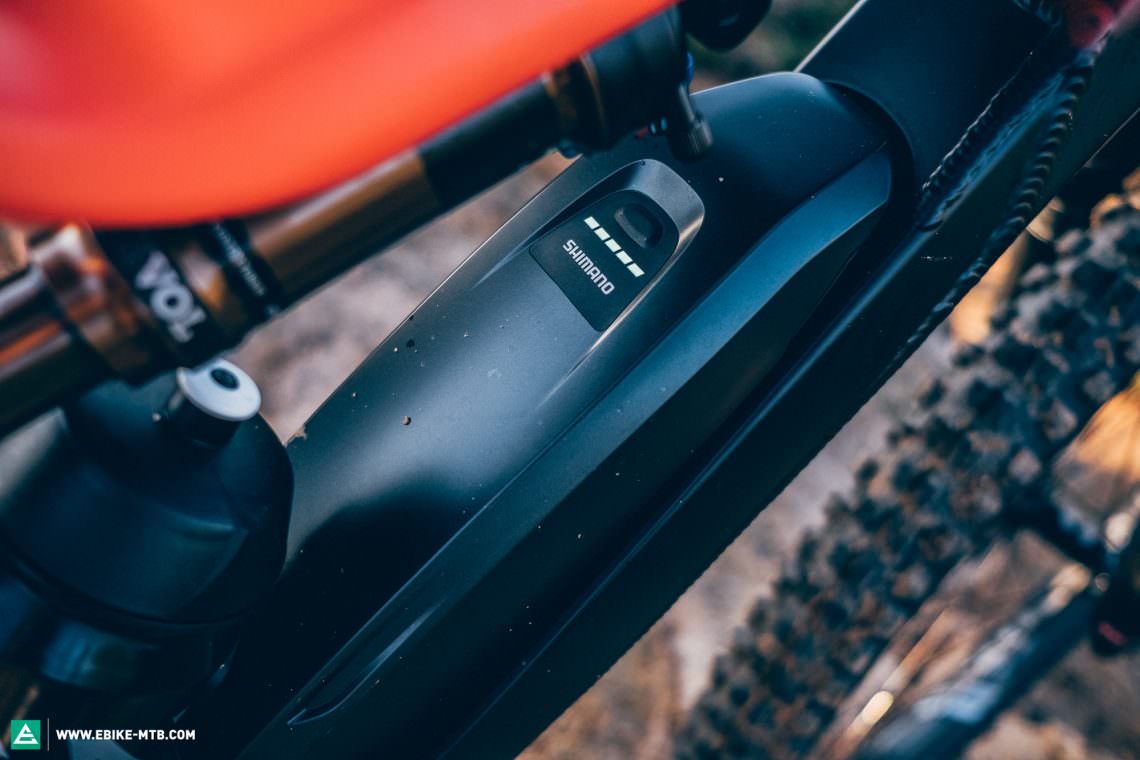
Mini: a smaller battery means less weight may be a good match for a less powerful motor. FAZUA take this concept to the extreme with their 252 Wh battery, the lowest capacity in the test field. However, they’re not the only ones, with smaller 320 Wh Shimano systems such as those found on eMTBs from FOCUS too. Specialized’s SL 1.1 motor has to make do with as little as 320 Wh.
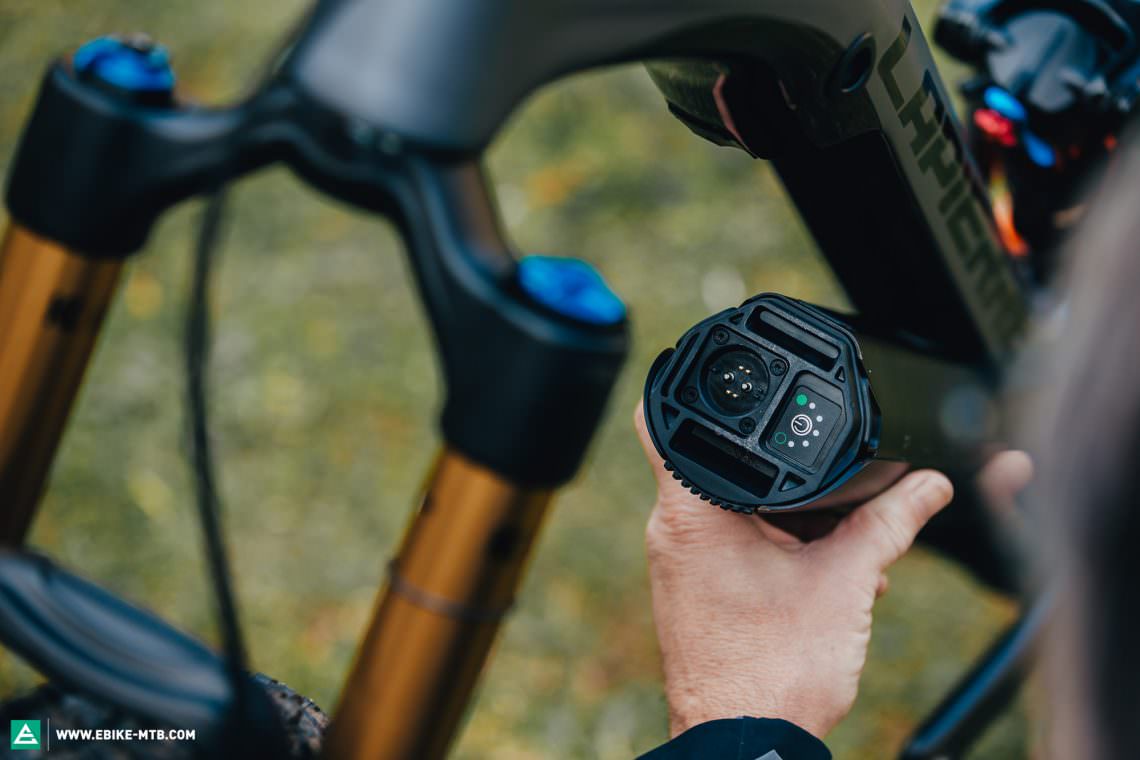
Modular: With this system, you can increase your total battery capacity with the help of an external range extender. For example, Bosch’s DualBattery system can give you a total capacity of up to 1250 Wh. Modular systems such as these are also available for Yamaha or Shimano motors, though they are offered by third party providers. Specialized make a super compact 160 Wh external battery pack for their SL 1.1 motor which fits into a bottle cage.
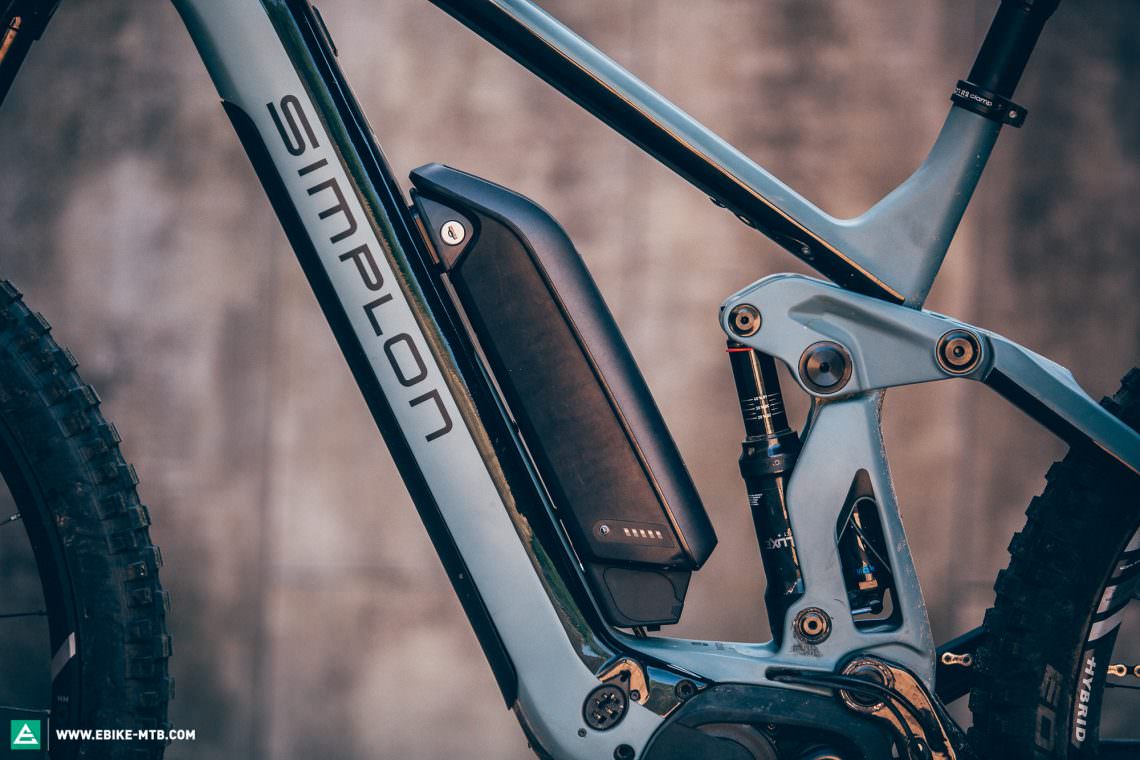
Modular battery systems offer a lot of flexibility and can usually be retrofitted at a later stage.
You’ll find a detailed overview of the most common battery systems as well as more specialised solutions in our big eMTB group test. Unfortunately, there is no clear-cut way to determine the range that you’ll get from various battery systems. Apart from the battery capacity, range is dependent on many other factors including the support mode, terrain, vertical meters, temperature, rider weight, pedalling efficiency, cadence and more. This means it’s impossible and is why we refuse to make any statements about a motor’s theoretical range using isolated values or calculations. If you’d like to find out more, you can read about it in our in-depth article for you on our website: How far can I ride on a single charge? The truth about laboratory tests.
Which battery system is right for me?
To allow you to make the most of your ebike without having a negative impact on the handling, the battery should be as small as possible and as big as necessary. The question you have to ask yourself here is how, where and how long you want to ride your eMTB on a regular basis. You should also consider what the ebike charging infrastructure at your local trails is like and which battery system you prefer. We’ve noticed that a lot of eMTBers are extremely scared of draining their battery while they’re out on the trails. Because of this, most of them resort to bigger batteries or dual battery systems which they don’t actually need. According to our reader survey, the length of your rides generally ranges between 30 and 50 kilometres. On a ride of that length, the majority of you won’t empty a standard battery. If you predominantly use your eMTB for quick after-work rides, a mini battery will allow you to ride your bike full-throttle for an hour and after a short but intense session, you can enjoy a well-deserved beer. If you enjoy longer, leisurely morning or afternoon rides, you’ll usually get along perfectly with a standard battery. Modular battery systems such as Bosch’s DualBattery is only ever necessary on very long rides or multi-day adventures with few or no charging stations in between. However, dual battery systems also offer one big advantage, allowing you to add capacity at a later stage. So, if you’re dreaming of doing a longer ride in the future, perhaps crossing the Alps, you always have that option and you’re completely flexible.
Ebike motor integration
The topic of integration is becoming ever more important for eMTBs. Only a few years ago, eMTBs still looked like DIY projects with the battery and motor bolted to the down tube like they were an afterthought. Fortunately, a lot of progress has been made regarding both looks and functionality. We’re seeing more and more brands integrating the battery and hiding it inside the down tube. With Bosch and FAZUA systems, you can still remove integrated batteries from your eMTB. With other motors, the battery is sometimes non-removable, meaning you’ll have to bring the bike to a power outlet to charge it. If you don’t have a plug near your bikes, this could be something to keep in mind.
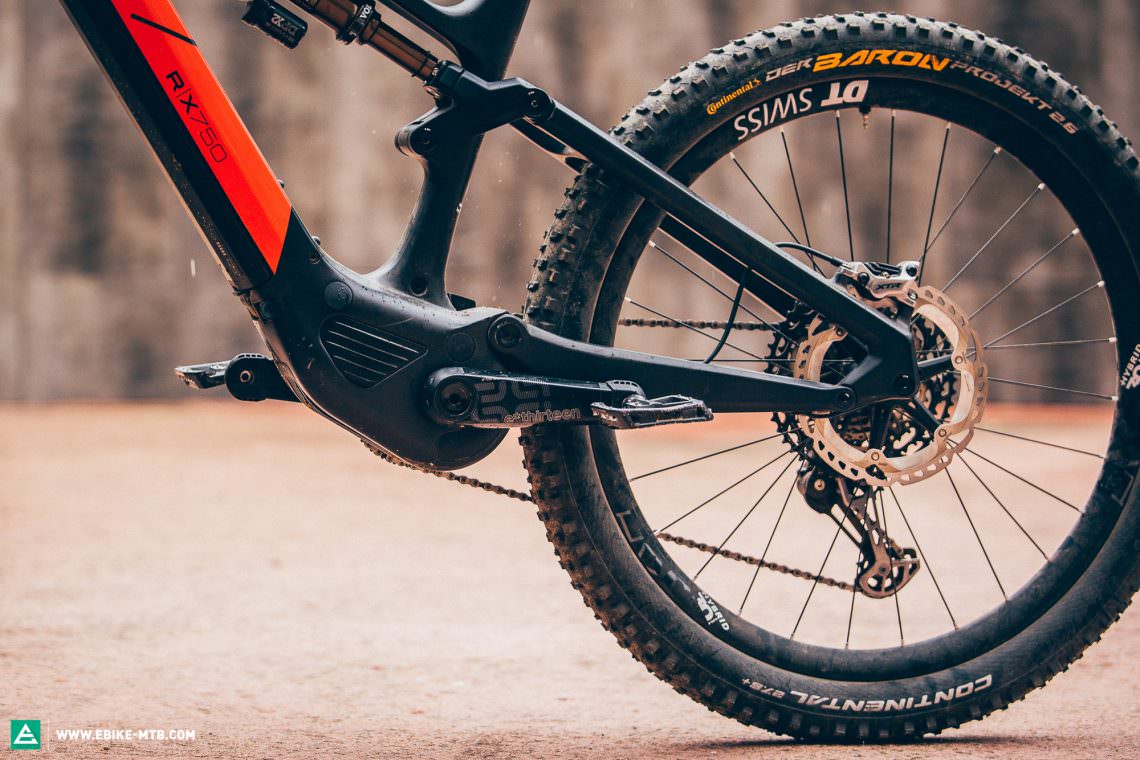
The best motors give bike manufacturers the freedom to integrate the motor seamlessly into the frame, as exemplified by the ROTWILD R.X 750
Most motors on the market have also become more compact, allowing manufacturers to seamlessly integrate them into the frame. It’s the same for the speed sensors, displays and remotes, now more securely integrated or attached to the bike, making them safer and more secure in the event of a crash.
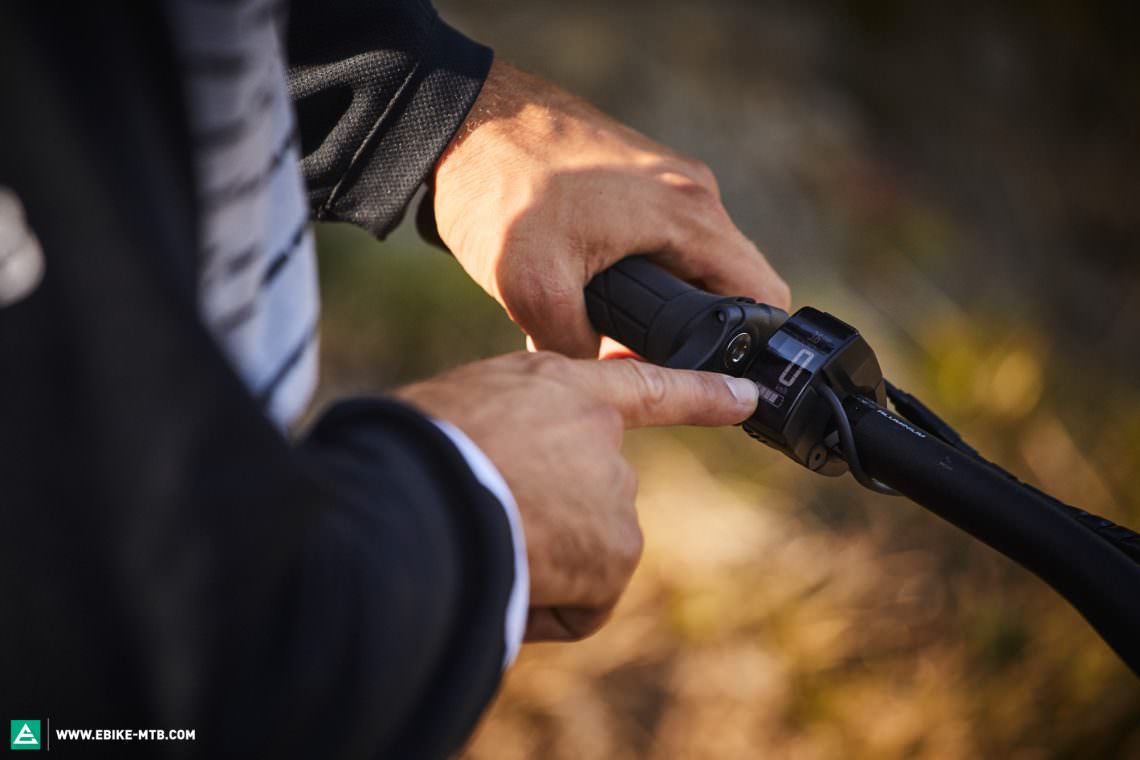
Which display and remote are best?
The display and remote options range from minimalist solutions all the way to full-fledged command centres. For Bosch, FAZUA and Shimano systems, bike brands have to resort to the motor’s standard remote and display. In contrast Yamaha, TQ, SACHS and Brose give bike manufacturers the freedom to design their own solutions. That said, the likes of Shimano or the SIGMA EOX system combined with the SACHS motor, provide a range of options, allowing customers to mix and match plug and play components to customise the cockpit to suit personal preference. Specialized also allow you to customise the cockpit, using their own Turbo Connect Unit (TCU) or brand new Mastermind integrated into the top tube. In terms of connectivity and navigation, other manufacturers are finally coming up. With the new Nyon, Bosch have integrated a large and innovative navigation system into the eMTB display. Communication between the motor and smartphone is a standard feature for almost all systems. However, the functionality of associated apps ranges from simple route tracking all the way to tuning motor settings depending on the motor and manufacturer.
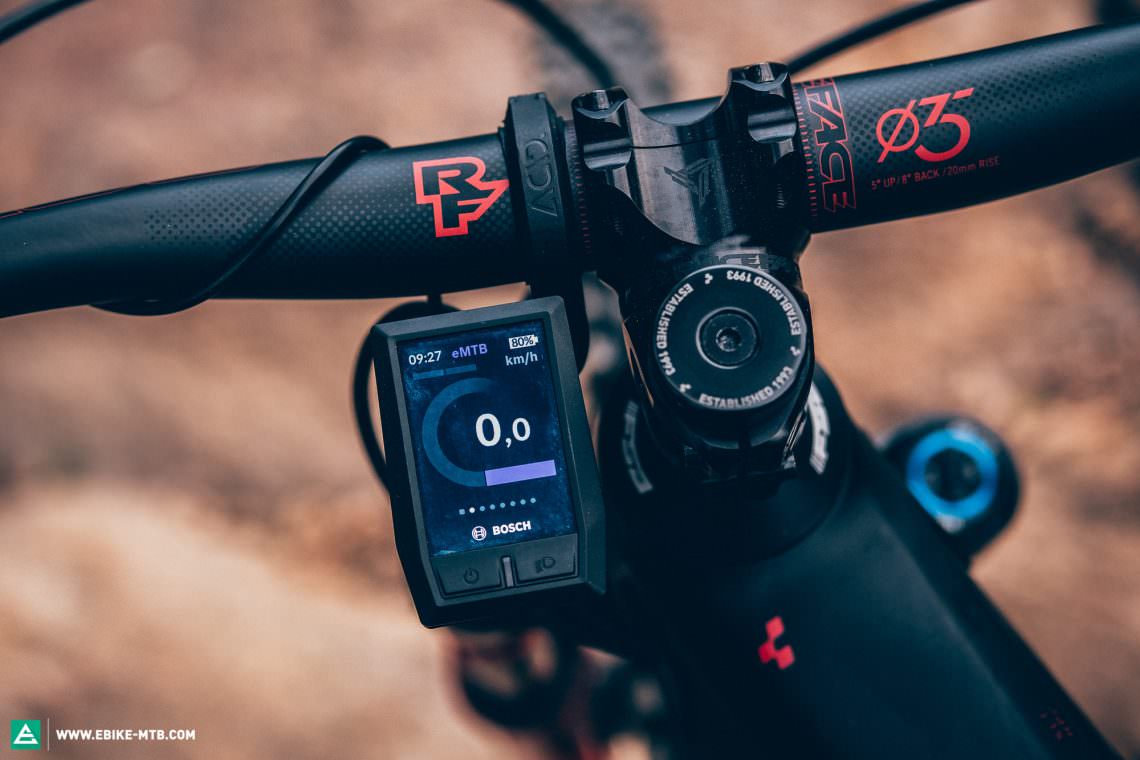
There is lots of room for improvement across the board regarding connectivity and navigation. We’re yet to encounter a usable navigation feature on one of the standard displays. Depending on the motor and bike brand, there are apps for everything from ride tracking to fine-tuning the assistance of the motor.
Despite the range of display options available, eMTBers still have to contend with three major issues. Often, the remote is so difficult to reach or so bulky that it compromises the other controls on your bars. The display or the remote are often so exposed that they’re prone to get damaged the moment you take a tumble. The display becomes unreadable in the glare of direct sunlight.
Motor software and hardware have to be in sync
Power is nothing without control. The most powerful motor is no use if you can’t control it, if it continues pushing long after you’ve stopped pedalling, if it engages violently or if it doesn’t react quickly when you get on the pedals. The motor should engage quickly yet smoothly, especially when pulling away or in response to changes in cadence, offering sufficient assistance to be of use without jerking you forward. The feeling of the motor depends on three main factors: the hardware, the software and the person riding the bike with all their irregularities and variables in pedalling cadence and stroke.
Motor software influences the ride feel
If you’re thinking that a natural ride feel imitates the feeling of riding an analogue mountain bike, you’re wrong. If that were the case, the motor would engage instantly as you push down on the pedals and cut out abruptly as soon as you stop. With the motor multiplying your power, that would be especially noticeable on the climbs with abrupt acceleration and deceleration. If you rode in tricky terrain where you have to time your pedalling to avoid clipping your pedals the motor would cut out immediately leaving you straddled on the obstacle. Pulling away on an incline or on loose ground would also be extremely difficult with so much power delivered all at once.
Since testing protocols give manufacturers a lot of freedom in their interpretation of data, you can’t always compare the specs of different motors.

It should be obvious that simply making the motor engage and disengage with your input is a far cry from natural-feeling assistance. It takes smart software to smooth out the transition between man and machine powered riding and to achieve harmony and the most natural experience on the bike. It is this harmony that we refer to when we speak about natural ride feel. This way the motor’s assistance engages smoothly and in a controlled way, and disappears almost imperceptibly when you stop pedalling or reach the 25 km/h limit. Instead of cutting out immediately, the motor should modulate its output when you stop pedalling, fading out slowly as if you’re rolling to a halt. Natural feeling assistance shouldn’t actually be something you feel unless you pay attention to it, which just wouldn’t be the case with surges power and sudden cuts in assistance.
Support modes
All motors have different support modes to choose from, given as a percentage of assistance relative to the rider’s power input. With 410 % assistance in its highest mode, the Brose Drive S Mag motor puts out about four times that what the rider puts in. Depending on the motor, you can get assistance from 50 % to over 400 or even 500 %. The more support modes you can choose from, the more finely you can adapt the assistance to suit the situation. In Eco mode, you can extend the range, or you can select maximum assistance to get up those steep climbs. The power of the support mode you select has a big influence on the ride feel.
Smart support modes are able to recognise the riding situation you’re in and adapt support accordingly.

The motor will usually feel more natural to ride in Eco mode with minimal assistance than it does in the highest support mode. Smart modes that dynamically adapt to the situation feel the most natural and intuitive to use. Thanks to integrated sensors, the system is able to recognise whether you’re pedalling gently or cranking on the pedals, adapting the support to match your effort. The more effort you put in, the more assistance the motor provides in response. Smart modes such as these almost make it unnecessary for you to shift between modes manually. Bosch’s progressive eMTB mode adjusts the assistance between Tour (140%) and Turbo mode (340%), depending on the amount of force you put on the pedals and the situation you’re in. The assistance always feels exactly right, delivering enough power while remaining smooth and easy to control: it’s the best progressive mode currently on the market! Yamaha’s smart mode includes data from sensors that detect the incline you’re on and always delivers a suitable amount of assistance, though it doesn’t feel as natural as Bosch’s eMTB mode. Shimano’s Trail mode is great too and it’s able to go even lower with the assistance than the Bosch motor, adjusting support between the weakest Eco and most powerful Boost mode.
Since testing criteria give manufacturers a lot of freedom in their interpretation of data, you can’t always make a direct comparison between the specs of different motors.
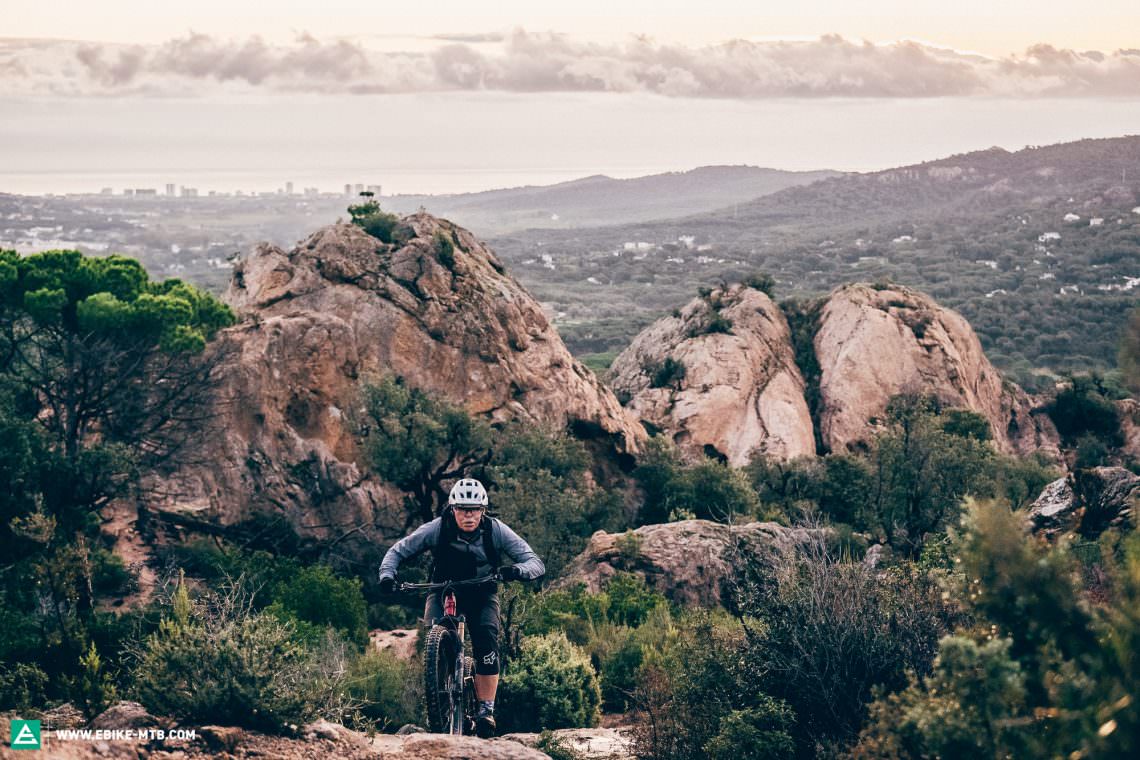
A powerful motor has to be easy to control and good-natured. This allows you to keep the front wheel on the ground – if you want to.
The motor tune chosen by bike manufacturers can be a deciding factor
A bike’s ride feel isn’t dependent solely on the motor system, but also on the bike into which it’s built. Different full-suspension bike designs offer major differences in pedalling efficiency. Some rear suspension bobs noticeably as you pedal, absorbing energy instead of it being transferred to the wheels. Other suspension kinematics can offer significantly better efficiency. As a result, even if they have the same motor, no two bikes will feel alike. Components such as the tires and wheels or the drivetrain and it’s gear ratios can also affect the ride feel of the motor. Of all the components, the length of the cranks can have a particularly noticeable impact on the ride feel of the motor. We recommend a crank length between 160 and 170 mm for trail riding.
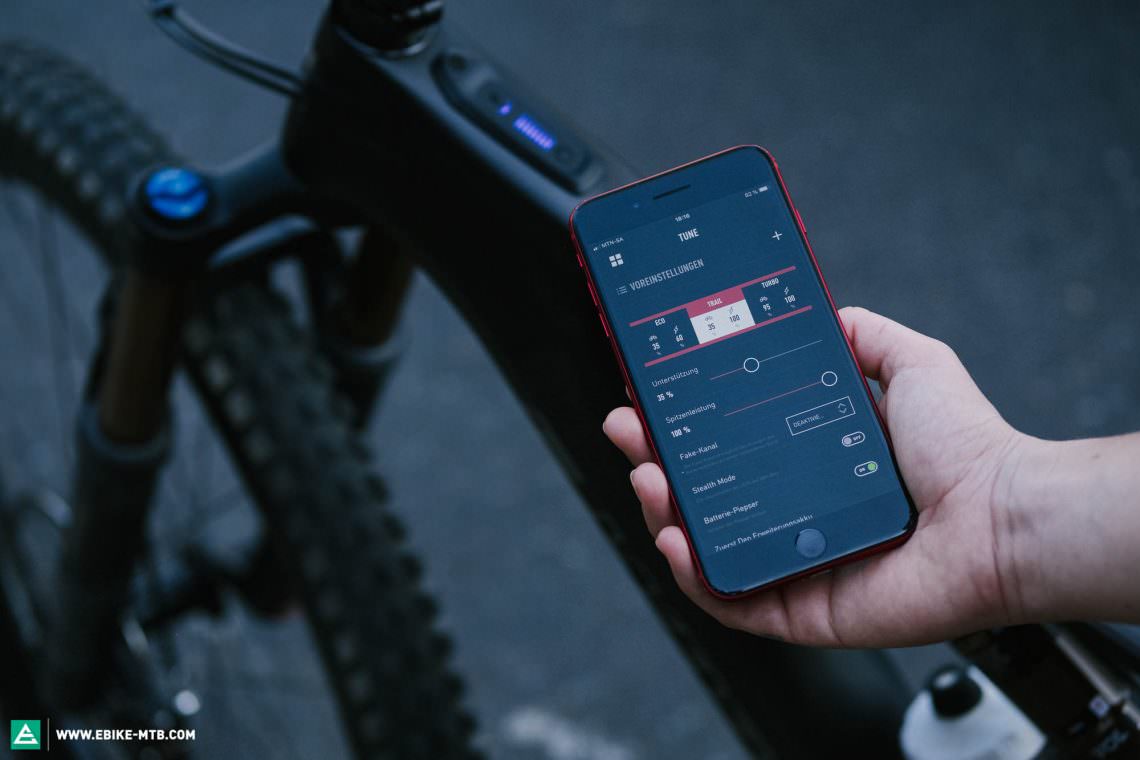
Specialized are leading the charge in all things integration and customisation. With the help of the Mission Control app, you can tune the settings of the motor without breaking any laws.
We noticed the biggest differences in the characteristics of motors where bike manufacturers are able to tune the motor themselves. Brose, Yamaha, SACHS and TQ give bike manufacturers a lot of freedom in customising the number of support modes, the percentage assistance of each and how the assistance kicks in and cuts out. Some bike manufacturers succeed much better than others in doing so. Case in point, in many bikes the Brose Drive S Mag delivers a natural ride feel that just isn’t present in others. Here, the bike manufacturer’s software settings have a major impact on how the motor handles.
All the important ebike motor specs at a glance
We often look at the specs of eMTB motors, but you won’t really be able to tell how a motor ultimately feels on the trail simply by looking at this data. Instead it serves as a rough indicator of potential performance. Besides the motor’s mechanical output numbers, what it often comes down to on the trail is the software settings, how noisy the bike is, pedalling cadence and the pedalling resistance.

Nominal power, torque and capacity explained
The power output of an eMTB motor is given in watts. The average power output, the so-called nominal power, is not allowed to exceed an average output of 250 W over a period of 30 minutes, as stated by the law in the EU and several countries outside of the EU. According to the manufacturers of the motors we tested here, they all fulfil this standard. The Specialized SL 1.1 motor produces 240 W, providing the least output of the motors we tested. The others have a peak output two-, three- or sometimes even four times that.
Torque output is given in newton metres (Nm), which describes the amount of rotational force the motor is able to generate. The strongest motor in the test field is the TQ, able to produce 120 Nm. All the motors are powered by rechargeable batteries of different sizes. The range depends on its capacity and how much electricity the motor consumes. Battery capacity or the “size” of the battery is given in watt-hours (Wh). A 500 Wh battery would last 2 hours if it had to power a motor that was constantly drawing 250 W. At least, that’s the theory. In practice, you also have to account for losses in efficiency of various components, so the battery is unlikely to last two hours as energy is dissipated elsewhere in the system.
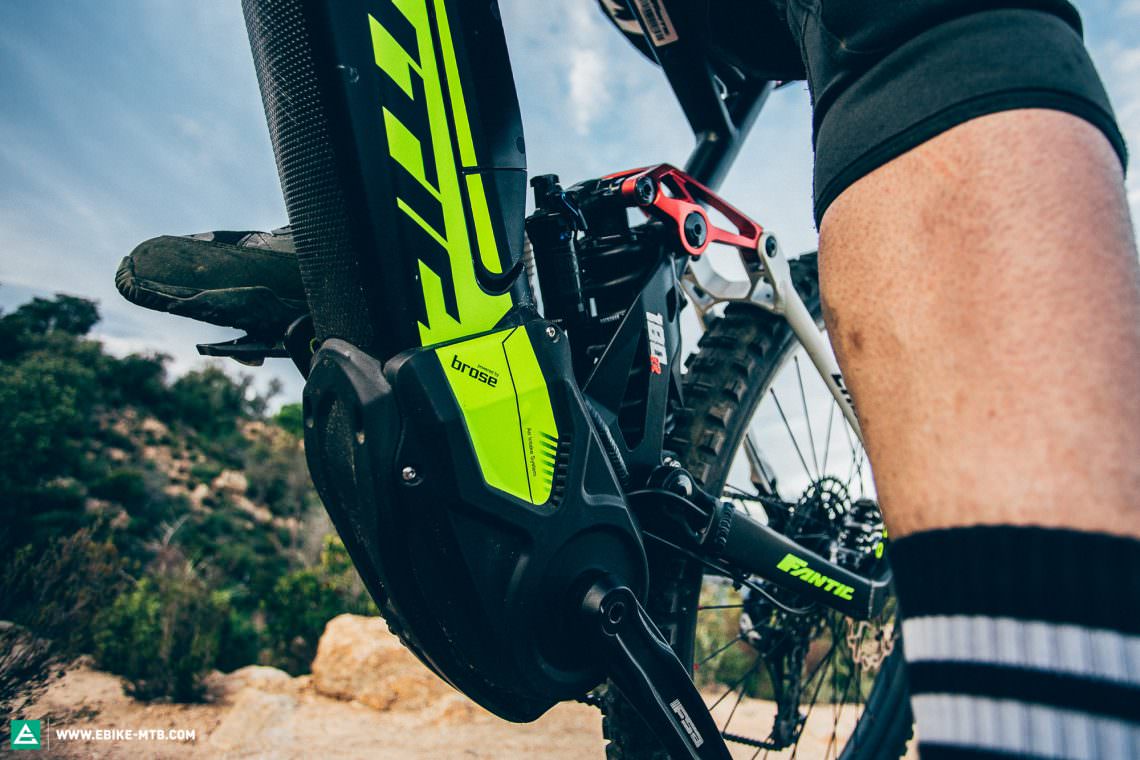
Depending on the software tune, the same motor can feel completely different in bikes from different brands.
How loud is an ebike motor?
The amount of noise the motor makes has an impact on the ride quality. A quiet motor is much more pleasant on the trails and can help to emphasise a natural ride feel. Along with the humming of the motor, there can also be other noises besides, such as freewheel mechanism inside the FAZUA motor which is clearly audible as it engages. Due to variability and tolerances in manufacturing, motors of the same make and model can occasionally sound very different. The metallic rattle coming from the inside of Bosch, Shimano and SACHS motors is very loud and present on some models and barely noticeable on others. Brose motors also tend to vary quite a bit in the noise they make. Some you’ll hear only quietly in the background while others are more conspicuous.
However, it’s not only the motor but also the design of the frame that can have a significant influence on how loud the motor is. While a motor can be very quiet in one bike, humming gently as you ride, it can be unpleasantly loud in the frame of a different eMTB, where the tubeset seems to amplify the noise.
What cadence does an ebike motor ride best at?
Your pedalling cadence has a direct influence on the motor and how well it’s able to assist you. Every electric motor has an optimal pedalling cadence range in which it’s able to perform most efficiently. Depending on its construction and internal gearing ratios, a motor might be better able to perform at higher or lower rpm. A good motor should be able to cope with fluctuations in the rider’s pedalling cadence and perform well over a broad band without lacking power at either extreme. The Yamaha PW-X2 performs better at a slow pedalling cadence than any other motor we tested, delivering full power from the get-go. Bosch’s Performance Line CX motor isn’t too bothered by fluctuating cadences either, performing consistently throughout.
How much pedalling resistance does an ebike motor have?
Your battery is empty and the motor is off. Now what? As soon as you go over the 25 km/h assistance limit or the motor is off, you’ll be confronted with the motor’s internal resistance. The resistance depends on the motor’s construction and the internal gearing, which is required to convert the motor’s high rpm to the slower speed of the chainring and cranks. Thanks to efficient solutions like the FAZUA Ride 50 Ride 50 Evation, Specialized SL 1.1 and the belt-driven Brose Drive S Mag motor, you’ll hardly notice any additional drag here. On the other hand, there is a noticeable amount of drag with Yamaha and SACHS motors the moment they stop providing assisting.
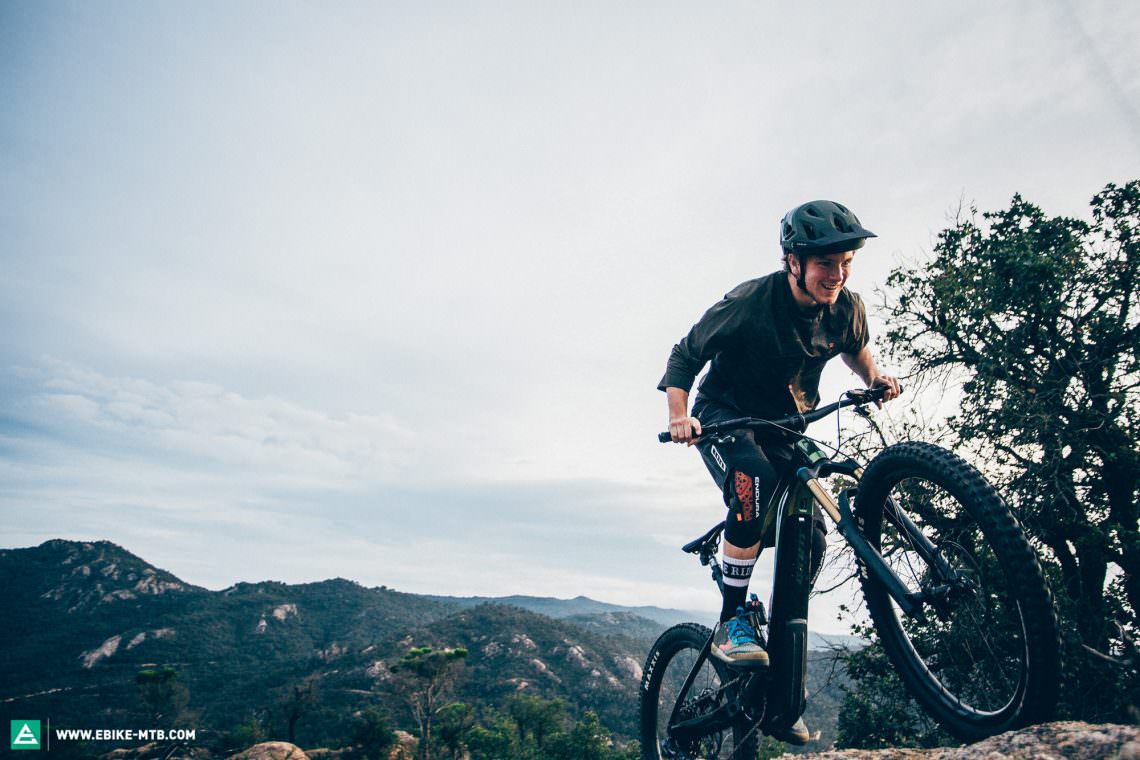
Some motors in the test field are more powerful than Finlay’s Suzuki Ignis. He clearly enjoys the wind in his hair.
What makes a good motor?
In a nutshell: a motor is good if the system as a whole including the battery, integration, power output and ride feel suits the bike into which it’s built. As we all use our eMTBs for different things and ride them in different ways, ideally you want to be able to adjust and tune the motor to suit your preferences, either doing it yourself or having it done at your dealer. Shimano and Specialized lead the way in this regard. With these motors, the customer is given a lot of options to configure the remote and display the way they prefer and tune the support modes via an app. FAZUA go one step further when it comes to motor setup. Alongside the usual adjustments, the app can suggest recommended settings based on questions about the rider and type of riding they will do.
A good motor is part of a seamlessly integrated system and perfectly suited for the bike’s intended use.

This is particularly intuitive and quick to understand, but it’s exactly this kind of customisability that makes it so difficult to compare motors. That becomes even more apparent when bike manufacturers develop their own batteries, displays and, most of all, their own software and firmware. It’s a nice bonus if the motor features a progressive smart mode, though it isn’t a must. Bosch show how it’s done with their eMTB mode, which is easy to control and always offers the right amount of assistance whatever the situation.

Haibike’s FLYON range featuring the powerful TQ motor comes with a 630 Wh battery. If you’re looking for a lot of power and you tend to keep your rides short, this is a great motor. However, you’ll run into problems if you want to go on longer rides unless you resort to using the energy-saving but also weak Eco mode. Specialized’s SL 1.1 motor is at the other extreme of the spectrum. It is an excellent concept for fit and aggressive riders who are looking for natural handling close to that of an unpowered bike thanks to its modular battery system, compact dimensions, low weight. However, the low power output means this is not the bike for those who want that eMTB-superman feeling on the climbs. As you can see, how you use your eMTB and how the system performs as a whole is the decisive factor here.
So, which is the best motor?
There is no longer just one best eMTB motor. The market has become too differentiated and on account of the countless variables and customisation options, there’s no way of rating the different motors in isolation either. The best motor is only as good as the bike into which it’s built. If the basic concept of the bike doesn’t work, even the best motor won’t be able to transform it into a good eMTB. Think carefully about when, how, and where you want to ride. Once you’ve figured that out, we’ve compiled an overview on the following pages to show you which motor is most suitable for you and your riding style.
All motors in this comparison
Brose Drive S Mag | Bosch Performance Line CX | FAZUA Ride 50 Evation | SACHS RS | Yamaha PW-X2 | Shimano STEPS E8000 | Shimano EP8 | TQ HPR 120S | Specialized SL 1.1

Other motors we’ve tested lately:
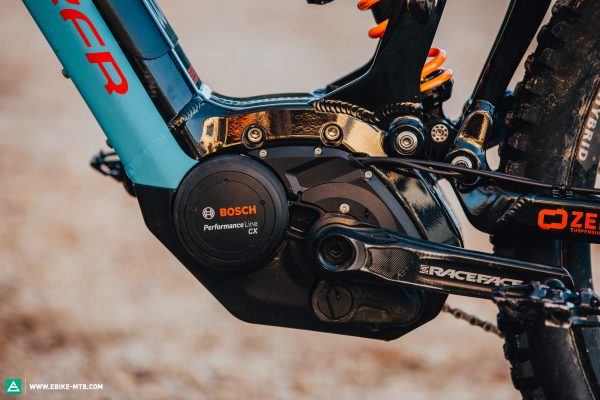
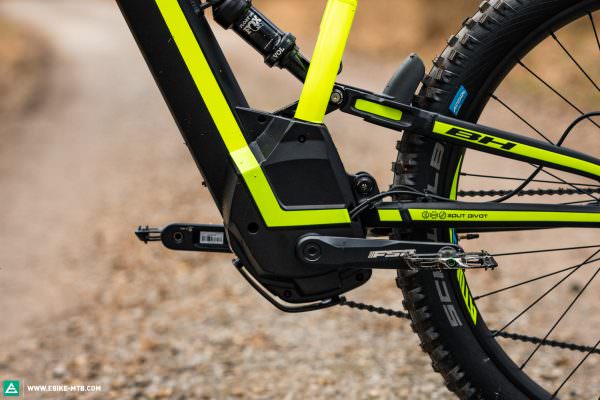

Did you enjoy this article? If so, we would be stoked if you decide to support us with a monthly contribution. By becoming a supporter of E-MOUNTAINBIKE, you will help secure a sustainable future for high-quality cycling journalism. Click here to learn more.
Words: Photos: E-MOUNTAINBIKE-Team




